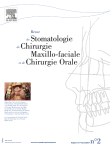D
Deleted member 4790
Oral and Maxillofacial Surgeon
- Joined
- Jan 17, 2020
- Posts
- 738
- Reputation
- 1,557
So MSDO can’t increase bigonial width and masculinize the lower jaw?
What about this vid? Does the lower jaw not increase laterally?
In that animation (not actual simulation) the mandibular condyles are displaced laterally and “pushed out” of the glenoid fossae. I don’t think actually happens, it would actually cause TMJ problems but it’s also difficult from a biomechanical point of view (I can’t prove it to you though, but it look like you should first prove what you say).
To me, condyles act as a pivot point. So, can you imagine the actual widening at the back part of the mandible if the condyles are the pivot point?



